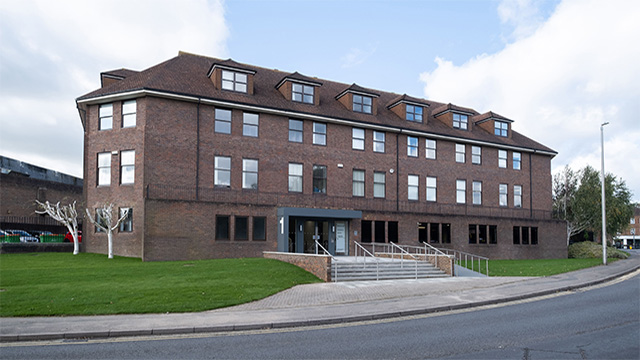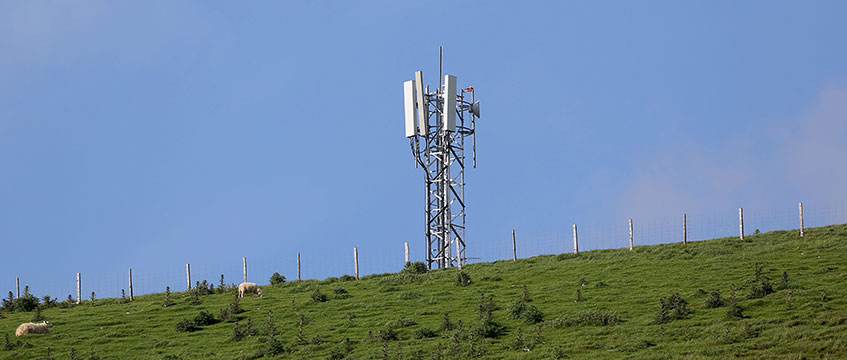Redevelopment breaks on greenfield sites
The tribunal gives its view on how the Electronic Communication Code differs from the Landlord and Tenant Act 1954, and the updated value of a rural mast site.
In EE Ltd and another v AP Wireless II (UK) Ltd [2024] UKUT 216 (LC); [2024] PLSCS 139, the Upper Tribunal (Lands Chamber) considered a matter concerning Vache Farm, Buckinghamshire. In doing so, it had the opportunity to revisit the issues of consideration for greenfield sites and terms around a redevelopment break (the reference being pursuant to paragraph 34(11) of the Code). The judgment is therefore the first since EE Ltd and Hutchison 3G UK Ltd v Affinity Water Ltd [2022] EGLR 10 in respect of consideration, and EE Ltd and Hutchinson 3G UK Ltd v Stephenson and another [2022] EGLR 38 in respect of redevelopment.
Facts The lease (for a standard size compound measuring just under 100 sq m) was originally granted to the claimant operators in 2005, with APW acquiring an overriding lease to the site in 2015. After the existing term expired in 2020, the rights continued as before until December 2020, when EE/H3G referred the matter to the tribunal. The case was initially stayed for other matters to be determined, following which the principle of whether or not there should be a new agreement was resolved consensually, together with most other key terms. The parties had negotiated a 10-year lease with a break exercisable by the operator after five years, and retail price index-based rent reviews.
The tribunal gives its view on how the Electronic Communication Code differs from the Landlord and Tenant Act 1954, and the updated value of a rural mast site.
In EE Ltd and another v AP Wireless II (UK) Ltd [2024] UKUT 216 (LC); [2024] PLSCS 139, the Upper Tribunal (Lands Chamber) considered a matter concerning Vache Farm, Buckinghamshire. In doing so, it had the opportunity to revisit the issues of consideration for greenfield sites and terms around a redevelopment break (the reference being pursuant to paragraph 34(11) of the Code). The judgment is therefore the first since EE Ltd and Hutchison 3G UK Ltd v Affinity Water Ltd [2022] EGLR 10 in respect of consideration, and EE Ltd and Hutchinson 3G UK Ltd v Stephenson and another [2022] EGLR 38 in respect of redevelopment.
Facts
The lease (for a standard size compound measuring just under 100 sq m) was originally granted to the claimant operators in 2005, with APW acquiring an overriding lease to the site in 2015. After the existing term expired in 2020, the rights continued as before until December 2020, when EE/H3G referred the matter to the tribunal. The case was initially stayed for other matters to be determined, following which the principle of whether or not there should be a new agreement was resolved consensually, together with most other key terms. The parties had negotiated a 10-year lease with a break exercisable by the operator after five years, and retail price index-based rent reviews.
Parties’ positions
In respect of the redevelopment break, the parties’ positions differed in the following ways: (a) whether the opportunity to terminate the lease should be available to APW where it intends to redevelop the site in connection with an electronic communications use; (b) whether the right should be exercisable at any time or only after five years; (c) whether APW should be required merely to “desire” to redevelop, or whether it should demonstrate a “settled intention”; (d) whether it should be required to demonstrate that it could not reasonably develop without obtaining possession of the communications site; and (e) whether, additionally, APW should have the right to terminate the lease because the test under paragraph 21 of the Electronic Communications Code for the imposition of an agreement is no longer met.
Decision and reasoning
Dealing with the first issue, the tribunal noted the fact that the Code was modelled on the Landlord and Tenant Act 1954, but said “‘the analogy should not be taken too far,” since the 1954 Act provides broader grounds than the Code. Drawing on the decision in Stephenson, the tribunal noted the policy of the Code is not to block redevelopment where the same would lead to more profitable use of the land, since it would be unfair and inappropriate for landowners to be prevented from making alternative use of their land by the imposition of long-term code rights which could not be terminated.
Accordingly, the real question was whether APW should have the right to terminate the lease sooner than at the end of the 10-year term. With regard to that point, the tribunal saw no reason to limit the break clause to less than five years, so allowed a landlord break after five years on 18 months’ notice. Neither did the tribunal see fit to limit the grounds for redevelopment so as to limit the same to redevelopment excluding use as a telecoms site; on the grounds that the site had been in operation for over 15 years, the initial investment would have long since been recouped, it was surmised.
With regard to issue (c), whether there should be a “desire” or a “settled intention”, the tribunal commented that paragraph 31(4)(c) requires a landowner to demonstrate the “appropriate resolve” at the date of the hearing of the application and, accordingly, that there was no reason that the contractual mechanism should depart from the language of the Code in this regard by referring to “intention” as opposed to “desire” or otherwise. In so holding, the tribunal has set out in certain terms that the Code differs from the 1954 Act in this respect. It did decide that the intended redevelopment must be one which could not reasonably be undertaken while the new lease continues, however.
In respect of point (e), the tribunal declined to allow the second limb of APW’s suggested break clause, which would allow it to terminate the lease if the paragraph 21 test was not met.
With regard to valuation, the operator contended that the appropriate consideration was £750 (drawing on the decision in On Tower Ltd v JH and FW Green Ltd [2021] EWCA Civ 1858; [2022] EGLR 3, often known as Dale Park), uprated to account for inflation using the RPI, thereby producing a rounded figure of £1,000per annum. APW suggested a base rent of £1,500, increasing to £2,850 to account for particular burdens at this site.
After considering extensive valuation evidence from experts on behalf of both parties, and legal submissions, the tribunal was persuaded that the earlier figure of £750 was too low and should be reconsidered, not only because of inflation but in the light of the evidence of non-telecommunications transactions for unexceptional rural sites. This evidence was principally contained in an open letter from the Central Association Of Agricultural Valuers dated 5 October 2018 to the Department for Digital, Culture, Media and Sport containing details of 16 open market transactions for small sites, all concerning non-telecommunications sites in rural areas, but also more recent evidence provided separately concerning a noise monitoring station near East Midlands Airport. That material, adjusted to take account of the “no-network” assumption (pursuant to paragraph 24 of the Code) but not increased despite larger compound sizes for telecoms sites, led the tribunal to conclude that the appropriate annual consideration for a rural mast site is £1,750.
Laura West is a director (barrister) at Fieldfisher
Photo © Dimitris Legakis/Shutterstock











